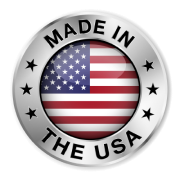The Importance of Cutting Brush in Agriculture and Forestry
Posted by Lee Padgett on 19th Jun 2024
In any field where managing organic waste and vegetation growth is part of the process, cutting brush and dense undergrowth becomes crucial to maintain the land. The practice of cutting brush is vital in forestry and agriculture, and using heavy machinery such as skid steers with articulating brush cutter equipment can make the job easier.
Cutting brush removes dense undergrowth, shrubs, and small trees. It plays a vital role in maintaining healthy ecosystems, promoting sustainable land use, and ensuring productive agricultural practices.
For those in these industries, brush management is essential for protecting crops and maintaining a healthy environment for local flora and fauna. Dense brush can lead to numerous problems.
These include the risk of wildfires, additional competition for local flora, and attracting pests that can damage crops. Land management uses brush cutting to mitigate these risks and promote healthier and more productive landscapes.
Cutting Brush in Agriculture
Agriculture requires land management practices that can retain the health of the soil and improve the crop yield of the land. These days, using chemical fertilizers is an option many land managers and farmers use.
However, if you want a more sustainable approach to yield productivity and soil management, cutting brush is a natural way to do so. For one, it can improve crop yield without the extensive use of fertilizers and pesticides. Dense brush competes with crops for sunlight, water, and nutrients. Removing brush reduces this competition, allowing crops to thrive and potentially increasing yields.
Overgrown brush can harbor pests and rodents that may damage crops. Clearing brush reduces habitats for these pests, leading to healthier crops and reduced need for chemical pest control.
Additionally, thick brush can also be a reservoir for plant diseases. Farmers can reduce the spread of diseases that might otherwise devastate crops when they remove thick brush near their crops.
Land Usability
Brush removal with articulating brush cutter equipment in agriculture is vital because it optimizes land usability. It expands the area of the arable land, and allows farmers to reclaim land that is otherwise unusable. This allows for the expansion of farming activities and increases the overall productivity of the agricultural property.
It also provides better access to arable areas and to different parts of the farm, facilitating better management and operational efficiency. Removing dense brush also makes it easier to use machinery for planting, harvesting, and maintenance activities.
Soil Management
Cutting brush using skid steers with articulating brush cutters can help manage erosion as part of soil management. While complete removal can sometimes exacerbate erosion, selective cutting and maintaining a ground cover of grass or low-growing plants can stabilize the soil.
Using a mulcher along with your brush cutter allows you to maximize soil productivity. Decomposed brush adds organic matter to the soil, enhancing its fertility. This organic matter improves soil structure, water retention, and nutrient availability for crops.
Fire Risk Reduction
Dense brush can act as fuel for wildfires. Regularly cutting and removing brush can reduce the risk of fires that could destroy crops, property, and lives. Clearing dead organic material along with dense vegetation can clear areas that can act as firebreaks, preventing the spread of wildfires and protecting valuable agricultural assets.
Forestry
Clearing brush in forestry has similar aims in agriculture, but it is mainly to protect the existing area from wildfires and invasive species. Removing dead organic materials can also promote tree growth, as it removes the dense underbrush that can cut off sunlight on growing saplings.
Foresters use brush cutting to make sure that all the trees receive sufficient light, water, and nutrients, promoting healthier and faster growth. Doing so also helps the forest to regenerate, as it provides space for young trees to establish and grow, contributing to sustainable forest management.
Wildfire Prevention
As in agriculture, dense brush in forests increases the risk of wildfires. Cutting brush reduces the organic material that can fuel such fires, and mitigate the risk and severity of these fires. In forested areas, removing thick brush and clearing an area of dense vegetation can create firebreaks. These cleared areas can control the spread of fires and protect larger, forested areas.
Habitat Management
Selective brush cutting can improve habitats for various wildlife species. It creates a more diverse landscape with different plant heights and types, supporting a wider range of animals. It helps maintain the biodiversity of an area, but also prevents invasive species from destroying the local fauna and flora.
Clear Land the Easy Way
Cutting brush is a critical practice in both agriculture and forestry, offering numerous benefits especially when effective brush management strategies are practiced. Land managers should use maneuverable machines such as skid steers with articulating brush equipment to make sure that all kinds of brush can be removed quickly and easily.
If you want to ensure sustainable land use and the productivity of your crops and other agricultural activities, the best choice is to use brush cutting equipment that can make the job easier whether it’s for forestry or agriculture.
Explore our selection of agricultural attachments here at Spartan Equipment now to find the brush cutter equipment that suits your needs, and clear land the easy way.



